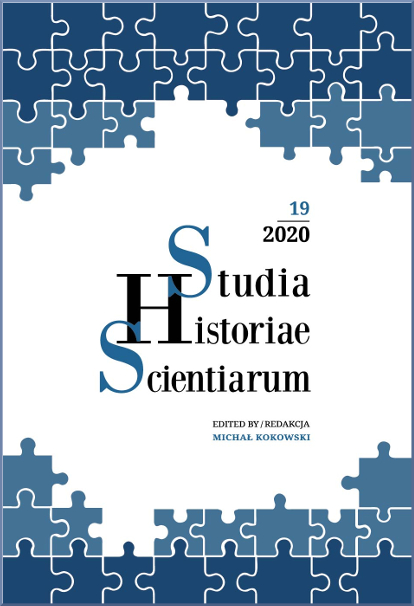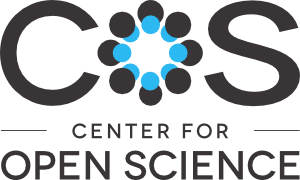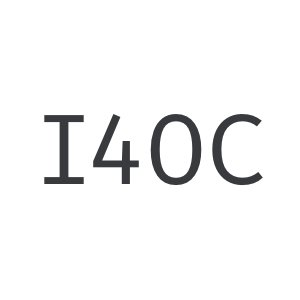Anna Semper (1826–1909) i kobieta naukowiec w nowożytnych Niemczech
DOI:
https://doi.org/10.4467/2543702XSHS.20.009.12565Słowa kluczowe:
Anna Semper, Carl Semper, nauka kolonialna, kobiety-naukowcy, historia biologii, historia zoologii, historia antropologii, historia etnografii, przemysłowe Niemcy, kolonialne Niemcy, Filipiny, PalauAbstrakt
Artykuł wykorzystuje prace Anny Semper (1826–1909) dla zbadania możliwości zrozumienia wkładu kobiet w rozwój nauki w Niemczech w II poł. XIX w. i początkach XX w.
Dzięki zbadaniu publikacji jej męża, przyrodnika Carla Sempera (1832–1893), a także innych naukowców, zaczynają wyłaniać się ślady sposobów, w jaki tworzyła ona wiedzę naukową.
Ponieważ praca Semperów dotyczyła Filipin i Palau, dwóch różnych hiszpańskich kolonii, i stanowiła podstawę kariery zawodowej Carla, artykuł analizuje także rolę Anny w tworzeniu jawnie kolonialnej nauki.
Bibliografia
Andree, Christian 1976: Rudolf Virchow als Prähistoriker. 2 vols. Cologne: Böhlau. Correspondenz-Blatt der Deutschen Gesellschaft für Anthropologie, Ethnologie und Urgeschichte 1870–1872: vols. 1–3.
[Anonymous1] Reisen im Archipel der Philippinen by C. Semper. 1868: Transactions of the Royal Microscopical Society 16, pp. 161–167. Available online: https://archive.org/details/transactionsofro16roya/page/n6/mode/2up.
[Anonymous2] 1870 (published in 1871): Semper’s Reisen im Archipel der Philippinen.
Jahres-Bericht der Schlesischen Gesellschaft für vaterländische Cultur 48, pp. 87–88. Available online: https://www.biodiversitylibrary.org/item/120733#page/95/mode/1up.
[Anonymous3] 1873: Semper, K.: Die Palau-Inseln im Stillen Ocean. Leipzig, Brockhaus. Mittheilungen aus Justus Perthes’ Geographischer Anstalt über Wichtige Neue Erforschungen 19, p. 197. Available online: https://zs.thulb.uni-jena.de/pdf?mets=https%3A%2F%2Fzs.thulb.uni-jena.de%2Fservlets%2FMCRMETSServlet%2Fjportal_derivate_00260781%2Fmets.xml%3FXSL.Style%3Dpdf&pages=203.
C., E. [Claparède, Édouard] 1868: Semper. Voyage dans L’Archipel des Philippines. Archives des Sciences physiques et naturelles 31, pp. 337–345. Available online: https://archive.org/details/archivesdesscien231gen/page/n6/mode/2up.
Deutscher Kolonialverein 1885: Deutsche Kolonialzeitung 2, p. 757.
Ellet, Elizabeth Fries 1859. Women Artists in All Ages and Countries. New York: Harper and Brothers.
Felder, C. and R. 1862: Lepidoptera nova. Wiener Entomologische Monatschrift 6, pp. 282–294.
Felder, C. and R. 1863: Lepidoptera nova. Wiener Entomologische Monatschrift 7, pp. 105–127.
Gerland, G. 1874: Bericht über den Stand der anthropologisch-ethnologischen Forschung und über die Fortschritte derselben in den letzten Jahren. Geographisches Jahrbuch 5: pp. 393–394.
Gray, J. E. 1868: Note on Hyalonema Schultzei, Semper. The Annals and Magazine of Natural History, including Zoology, Botany, and Geology 2, pp. 373–377.
Humboldt, Alexander von 1845–1862. Kosmos: Entwurf einer physischen Weltbeschreibung. 5 vols. Stuttgart: Gotta.
Kirchhoff, A. 1899: Die Palau-Inseln im Stillen Ocean. Deutsche Kolonialzeitung 16: 341.
Krämer, Augustin 1917: Ergebnisse der Südsee-Expedition 1908–1910. 1. Teilband: Abteilung I. Entdeckungsgeschichte und II. Geographie. Hamburg: Friederichsen.
Krämer-Bannow, Elisabeth 1916: Bein kunstsinnigen Kannibalen der Südsee: Wanderungen auf Neu-Mecklenburg 1908–1909. Berlin: Reimer.
Kubary, J. 1873: Die Palau-Inseln in der Südsee. Journal des Museum Godeffroy: Geographische, ethnographische und naturwissenschaftliche Mittheilungen 1: 177–238.
Merian, Maria Sybilla 1679. Der Raupen wunderbare Verwandelung und sonderbare Blumen-nahrung. Nuremberg: Graffen.
Merian, Maria Sybilla 1705. Metamorphosis insectorum surinamensium. Ofte verandering der Surinaamsche insecten. Amsterdam: Valck.
Nicéville, Lionel de 1890: The Butterflies of India, Burmah and Ceylon. Vol. 3. Calcutta: Calcutta Central Press.
Olivart, Marqués de 1899: Colección de los Tratados, Convenios y Documentos Internacionales. Madrid: Fernando Fe.
Rarsball, William 1893: Karl Semper. Illustrierte Zeitung 100, p. 651. Available online: https://ia902305.us.archive.org/4/items/bub_gb_ymAzAQAAMAAJ/
bub_gb_ymAzAQAAMAAJ.pdf.
Ritter von Stummer-Traunfels, Rudolf 1895: Tropische Polycladen. I. Das Genus Thysanozoon Grube. Zeitschrift für wissenschaftliche Zoologie 60, pp. 689–725.
Available online : https://www.zobodat.at/pdf/Zeitschrift-fuer-wiss-Zoologie_60_0689-0725.pdf.
Rückert, Heinrich 1873: Neue Reiseliteratur. Blätter für literarische Unterhaltung, November 6, p. 707.
Schuberg, A. 1893: Gedächtnissrede auf Herrn Professor Dr. Carl Semper. Sitzungsberichte der Physikalisch-Medizinischen Gesellschaft zu Würzburg, pp. 109–134.
Schultz, V. 1905: Eine Robinsonade auf den Palauinseln. Nach Professor Semper frei für reifere Jugend bearbeitet. Reutlingen: Ensslin & Laiblins.
Selenka, Emil 1883: Reisen im Archipel der Philippinen. Vol. 4 Die Sipunculiden. Wiesbaden: C.W. Kreidel.
Semper, Carl 1868a: Reisen im Archipel der Philippinen. Vol. 1 Holothurien. Leipzig: Wilhelm Engelmann.
Semper, C. 1868b: On Hyalonema Schultzei and on Eurete. The Annals and Magazine of Natural History, including Zoology, Botany, and Geology 2, pp. 372–373.
Semper, Carl 1869: Die Philippinen und ihre Bewohner: Sechs Skizzen. Würzburg: A. Stuber.
Semper, Carl 1870: Reisen im Archipel der Philippinen. Vol. 3 Landmollusken. Wiesbaden: C.W. Kreidel.
Semper, Karl 1873: Die Palau-Inseln im Stillen Ozean: Reiseerlebnisse. Leipzig: F. A. Brockhaus.
Semper, Carl 1876: Der Haeckelismus in der Zoologie. Hamburg: W. Mauke Söhne.
Semper, Carl 1877: Offener Brief an Herrn Professor Haeckel in Jena. Hamburg: W. Mauke Söhne.
Semper, Karl 1880: Die Natürlichen Existenzbedingungen der Thiere. Erster Theil. Leipzig: F. A. Brockhaus.
Semper, Karl 1903: Ueber das Aussterben der Palau-Insulaner und dessen mutmasslichen Ursachen. Koloniale Zeitung 4, pp. 373–374.
Semper, Georg 1873: Auf der Insel Yap gesammelte Schmetterlinge und deren Verwandlungsgeschichte. Journal des Museum Godeffroy: Geographische, ethnographische und naturwissenschaftliche Mittheilungen 1, pp. 131–136.
Semper, Georg 1886: Reisen im Archipel der Philippinen. Vol. 5 Die Schmetterlinge der philippinischen Inseln. Wiesbaden: C. W. Kreidel.
Senfft, A. 1902: Deutsch-Neu-Guinea. Ueber einen Besuch der Palau-Inseln. 1902: Deutsches Kolonialblatt 13, pp. 263–264. Available online: https://archive.org/details/deutscheskoloni04kologoog/page/n340/mode/2up.
Senfft, A. 1905: Deutsch-Neu-Guinea. Bericht des Bezirksamtmanns Senfft über eine Reise nach den Palau-Inseln vom 18. Juli bis 22. August 1904. Deutsches Kolonialblatt 16, pp. 49–52.
Senfft, A. 1907a: Deutsch-Neuguinea. Die Palau-Inseln. Deutsches Kolonialblatt 18, pp. 286–289.
Senfft, A. 1907b: Deutsch-Neuguinea. Eine Reise nach Palau, Sonsol und Tobi. (Oktober bis Dezember 1906.) (Mit 4 Abbildungen). Deutsches Kolonialblatt 18, pp. 659–668.
Stummer-Traunfels, Rudolf Ritter von 1895: Tropische Polycladen. I. Das Genus Thysanozoon Grube. Zeitschrift für wissenschaftliche Zoologie 60, pp. 689–725.
Verzeichniss der anthropologischen Literatur: Australien und Ozeanien 1874: Archiv für Anthropologie 7: p. 54.
SECONDARY SOURCES
Badilescu, Simona 1998: Early Science Books and Their Women Translators. The Physics Teacher 36, pp. 516–518.
Bacareza, Hermógenes E. 1980: A History of Philippine-German Relations. Quezon City: National Economic and Development Authority.
Blackbourn, David 2003: History of Germany 1780–1918: The Long Nineteenth Century. 2nd ed. Malden, MA: Blackwell.
Cannon, Susan Faye 1978: Science in Culture: The Early Victorian Period. New York: Dawson and Science History Publications.
Criado Perez, Caroline 2019: Invisible Women: Data Bias in a World Designed for Men. New York: Abrams Press.
Davis, Natalie Zemon 1995: Women on the Margins: Three Seventeenth-Century Lives. Cambridge, MA: Harvard University Press.
Hammel, Tanja 2016: Mary Barber’s Expedition Journal: An Experimental Space to Voice Social Concerns. Expeditions as Experiments: Practising Observation and Documentation, eds. Marianne Klemun and Ulrike Spring. London: Palgrave Macmillan.
Hempel, Eberhard 1996: Der Beitrag Carl Gottfried Sempers zu Ethnographie und Ethnologie im 19. Jahrhundert. Abhandlungen und Berichte des Staatlichen Museums für Völkerkunde Dresden 49, pp. 181–292.
Hezel, Francis X. 1983: The First Taint of Civilization: A History of the Caroline and Marshall Islands in Pre-Colonial Days, 1521–1885. Honolulu: University of Hawai’I Press.
Hezel, Francis X. 1995: Strangers in Their Own Land: A Century of Colonial Rule in the Carolina and Marshall Islands. Honolulu: University of Hawai’i Press.
Jacquin, Freyherrn von and J. J. Littrow 1832: Bericht über die Versammlung deutscher Naturforscher und Ärzte in Wien. Vienna: Friedrick Beck.
Kelly, Alfred 1981: The Descent of Darwin: The Popularization of Darwinism in Germany, 1860–1914. Chapel Hill: University of North Carolina Press.
Knoll, Arthur J. and Hermann Hiery, eds. 2010: The German Colonial Experience: Select Documents on German Rule in Africa, China, and the Pacific 1884–1914. Lanham, MD: University Press of America.
Martin, Alison E. 2011: The Voice of Nature: British Women Translating Botany in the Early Nineteenth Century. Translating Women, ed. Luise von Flotow. Ottawa: University of Ottawa Press.
Mazón, Patricia M. 2003: Gender and the Modern Research University: The Admission of Women to German Higher Education, 1865–1914. Stanford: Stanford University Press.
Nyhart, Lynn K. 1995: Biology Takes Form: Animal Morphology and the German Universities, 1800–1900. Chicago: University of Chicago Press.
Paszkowski, Lech 1971: John Stanislaw Kubary—Naturalist and Ethnographer of the Pacific Islands. The Australian Zoologist 16, pp. 43–70.
Pratt, Mary Louise 2008: Imperial Eyes: Travel Writing and Transculturation. 2nd ed. London: Routledge.
Rücker, Elisabeth 1967: Maria Sibylla Merian 1647–1717. Nuremberg: Germanisches Nationalmuseum.
Sáchez, Dolores 2011: On the Translation of a Misogynist Scientific Treatise in Early Twentieth-Century Spain. The Translator: Studies in Intercultural Communication 17(2), pp. 325–348. DOI: 10.1080/13556509.2011.10799492.
Schiebinger, Londa 1999: Has Feminism Changed Science? Cambridge: Harvard University Press.
Schiebinger, Londa 2004: Plants and Empire: Colonial Bioprospecting in the Atlantic World. Cambrdige: Harvard University Press.
Schiebinger, Londa 2005: The European Colonial Science Complex. Isis: A Journal of the History of Science Society 96, pp. 52–55.
Schmidt-Loske, Katharina 2007: Die Tierwelt der Maria Sibylla Merian. Marburg: Basilisken-Presse.
Schuberg, August 1895: Carl Semper. Arbeiten aus dem Zoologisch-Zootomischen Institut in Würzburg 10, pp. III–XXII.
Shapin, Steven 1989: The Invisible Technician. American Scientist 77, pp. 554–563.
Smith, Woodruff 1978: The German Colonial Empire. Chapel Hill: University of North Carolina Press.
Tyner, Judith A. 2020: Women in American Cartography: An Invisible Social History. Lanham, MA: Lexington Books.
Weston, Nathaniel Parker 2012: Scientific Authority, Nationalism, and Colonial Entanglements between Germany, Spain, and the Philippines, 1850 to 1900. Thesis (Ph.D.). University of Washington. Available online: https://digital.lib.washington.edu/researchworks/bitstream/
handle/1773/20680/Weston_washington_0250E_10503.pdf?sequence=1&isAllowed=y.
Wikipedia 2020a: Karl Semper. Available online: https://de.wikipedia.org/wiki/Karl_Semper.
Wikipedia 2020b: Carl Semper. Available online: https://en.wikipedia.org/wiki/Carl_Semper.
Wikipedia 2020c: Jan Kubary. Available online: https://pl.wikipedia.org/wiki/Jan_Kubary.
Wikipedia 2020d: Johann Stanislaus Kubary. Available online: https://de.wikipedia.org/wiki/Johann_Stanislaus_Kubary.
Wikipedia 2020e: John Stanislaw Kubary. Available online: https://en.wikipedia.org/wiki/John_Stanislaw_Kubary.
Wildenthal, Lora 2001: German Women for Empire, 1884–1945. Durham: Duke University Press.
Wuerch William L. and Dirk Anthony 1994: Historical Dictionary of Guam and Micronesia. Lanham, MD: Scarecrow Press.
Pobrania
Opublikowane
Jak cytować
Numer
Dział
Licencja
Prawa autorskie (c) 2020 Nathaniel Parker Weston

Utwór dostępny jest na licencji Creative Commons Uznanie autorstwa – Użycie niekomercyjne – Bez utworów zależnych 4.0 Międzynarodowe.






























